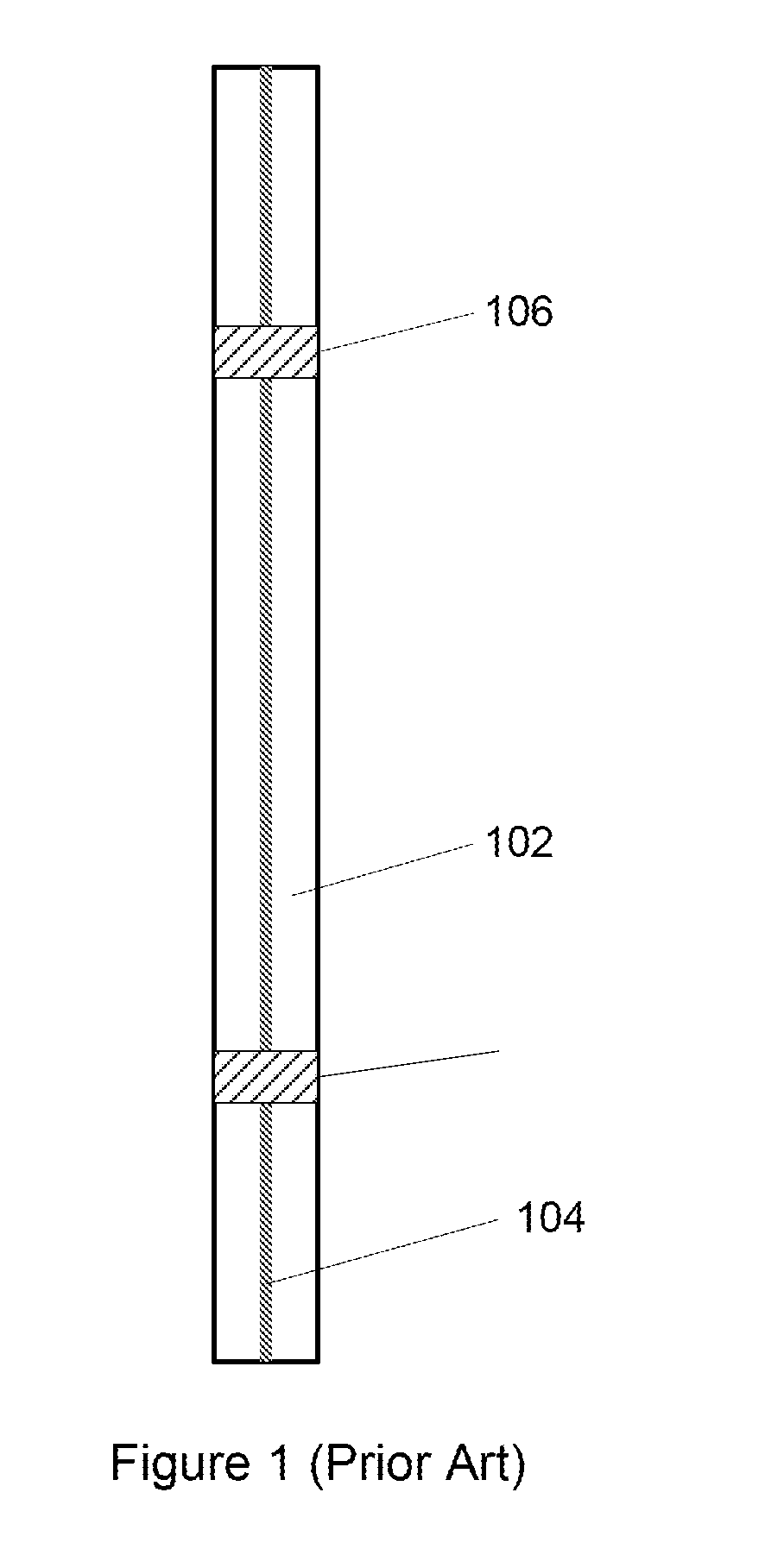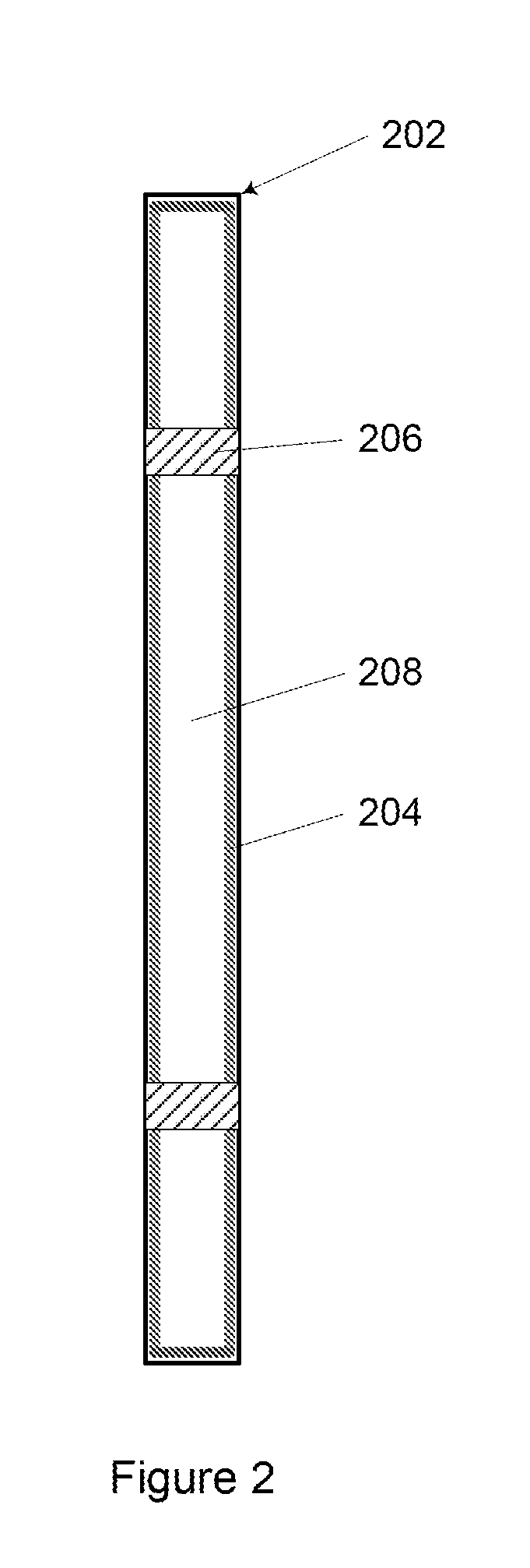System and module for solar module with integrated glass concentrator
a solar module and glass concentrator technology, applied in the field of solar energy techniques, can solve the problems of insufficient glass material, insufficient glass material, and insufficient glass material, and achieve the effects of reducing the amount of glass material, and simplifying the manufacturing process
- Summary
- Abstract
- Description
- Claims
- Application Information
AI Technical Summary
Benefits of technology
Problems solved by technology
Method used
Image
Examples
Embodiment Construction
[0016]The present invention relates generally to solar energy techniques. In particular, the present invention provides a method and a structure for a resulting solar module. Merely by way of example, the invention has been applied to solar panels, but it would be recognized that the invention has a much broader range of applicability.
[0017]FIG. 1 is a simplified diagram illustrating a conventional solar module. As shown, the conventional module includes a photovoltaic region 102. The photovoltaic region is usually a semiconductor material such as single crystal silicon, polycrystalline silicon, thin file material such as CIGS, amorphous silicon, and others. As shown, the conventional solar module includes a conductor element 104 commonly known as finger, disposed on about a center region of the photovoltaic region. The solar module also includes bus bar pads 106 to allow the electric energy generated within the photovoltaic strip to be collected using a bus bar coupled to the bus b...
PUM
 Login to View More
Login to View More Abstract
Description
Claims
Application Information
 Login to View More
Login to View More - R&D
- Intellectual Property
- Life Sciences
- Materials
- Tech Scout
- Unparalleled Data Quality
- Higher Quality Content
- 60% Fewer Hallucinations
Browse by: Latest US Patents, China's latest patents, Technical Efficacy Thesaurus, Application Domain, Technology Topic, Popular Technical Reports.
© 2025 PatSnap. All rights reserved.Legal|Privacy policy|Modern Slavery Act Transparency Statement|Sitemap|About US| Contact US: help@patsnap.com



